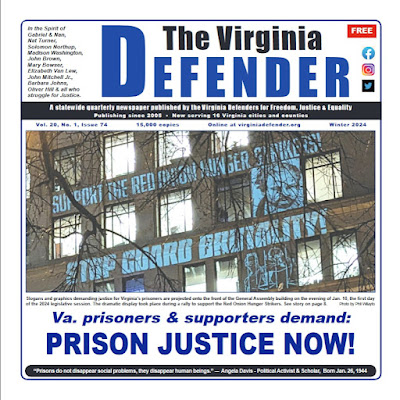Photo of "Gabriel" is actually Hubbard D. Pryor
This image of a seated man in ragged clothing, while long believed to depict Gabriel, the enslaved blacksmith who led the insurrection attempt of 1800, is actually the image of another enslaved man, born about 40 years after Gabriel died. I do not know when this portrait of Private Hubbard D. Pryor, 44th Regiment, United States Colored Troops, was first used to represent Gabriel, but the association is now fixed in the popular mind as fact. And what a shame for Mr. Pryor's own history.
This post is, at last, the story of my persistent attempts to correct this fact at every public event and birthday party I attend. I want to re-situate these two men in their proper time and place, and allow each the value and resonance of their own stories.
Sometime in 2004 or 2005, I began to think that this image "of Gabriel" was rather natural, almost photographic in style. As I examined higher resolution versions of the image, I thought perhaps it had been an etching created from a painting, something early printers used in addition to illustrations. Frankly, the Wall Street Journal came to mind because, in their old world/old money kind of way, they continue to use hedcuts, illustrations from photographs (that were once hand drawn) rather than etchings or lithographs or photographic screen prints. But if this was from a painting, it was a highly realistic painting style that would have been very unusual when Gabriel lived. American painting of the turn of the 18th to 19th century was quite limited and described often as "primitive," self-taught or at least the work of painters not trained in Europe, typically England, France, Prussia, Netherlands, even Denmark. Frankly, something this naturalistic was unusual for the style and subject matter of paintings in Europe at the time. And a subject like Gabriel would have been almost unheard of.
Did Gabriel sit for a painted portrait? He certainly appears to be doing just that. But when could he have set for a portrait? Before the rebellion attempt he was a complete unknown in the public mind. Within 10 days of his capture he was put on trial, convicted and, 4 days later he was dead. Who would have paid for such a thing? Portraits were expensive purchases for the wealthy and most typically were portraits of the wealthy or high-ranking. Additionally, and as word of the scale of organization and recruitment spread, he certainly became notorious in the White mind with stories running in newspapers up and down the Atlantic coast. That level of fame might justify a depiction of some kind, but not for rebellious slaves--slaveholders were not anxious to cultivate a popular face for one who sought to end them. No illustrations have surfaced, no likenesses captured from life or even imagined even as the story of the attempt became popular for tourists and legendary for Black people holding onto hope and planning the next attack on slavery.
Perhaps the painting was done much later, in the late 19th century, a reflective depiction of a notorious yet inspiring figure from the past by some artist or patron of the arts who wanted to capture something of the socio-racial contradictions of the post-emancipation age. This later timeframe would also allow for photography to play a part in the story. In 1800 there was no photography, so not only is it unlikely that a painted portrait of Gabriel have been commissioned during his young life, there's no way there was ever a photograph of him.
And yet, look at the pose... The man is clearly sitting for the portrait, and appears almost relaxed. So, if this isn't Gabriel, is it an imagined figure based on a live model the artist hired? Is it someone else altogether? These were all the thoughts rolling around my noggin when my husband and I happened to visit the African American Civil War Museum in Washington, D.C. some time in 2005 or so -- I cannot remember.

Carte de visite by A. S. Morse (life dates unknown) of Nashville, Tennessee, March or April 1864. Collections of National Archives and Records Administration, Washington, D.C. These are two photographs of Hubbard D. Pryor taken upon his arrival in the Union camp and after enlisting. Below are the two engravings created for use in newspapers and handbills to recruit Black men to enlist in the United States Colored Troops during the last year of the Civil War. (This is my unfortunate snapshot of pages from African American Faces of the Civil War: An Album by Ronald S. Coddington, published by Johns Hopkins University Press, 2012).
Note the idealization of Pryor as a tall, proud man, confident in his new role as soldier in the fight to win the war against the Confederacy and slavery.
(I can see now it would be nice to explain a bit more of the history of art to back up my thinking about eras and painting styles, but I'm going to ask you to just hang with this version for now. Thank you.)


